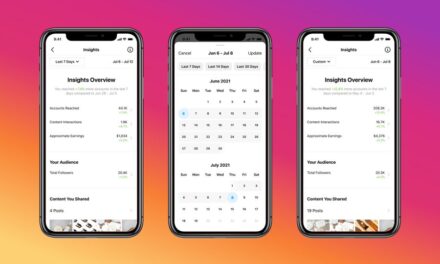By Jan Guardian
Expensive, time-consuming, and something that seems to take an eternity to implement. Does this sound like a sensible way of letting business users go about doing data analysis for digital marketing campaigns? The information requirements of marketers have become far too dynamic to allow the use of antiquated technology. Traditional business intelligence (BI) approaches that take weeks and months to implement simply do not fit the bill when it comes to the more ad-hoc and real-time data analysis requirements in digital marketing.
Traditional vs. Embedded BI: A Primer
From a business perspective, the biggest drawback of a traditional BI setup is the extended time-to-delivery. Consider the following key steps of such projects.
- Campaign/cost/conversion data is captured from legacy systems into staging databases.
- Extensive data transformations are then used to make the raw data reporting-ready.
- Reporting data is stored in dedicated databases using purpose-built data models.
- A separate visualization tool is then used to create reports that are often designed by IT developers and lack interactivity beyond implementing basic filters. Most changes require modifying the underlying data model and implementing additional data transformations.
These steps take anywhere from between a few days to a few months and require extensive IT involvement. While this method may work for historical reporting (for example, in finance) on a fixed set of metrics and dimensions, it is simply not real-time or interactive enough for digital marketing where analysts often do not know the kind of information they want until after seeing campaign results.
In contrast, embedded BI cuts short many of the steps primarily around data modeling and extracting, transforming and loading (ETL) information. These capabilities are baked into the tool, which allows business executives to create highly interactive reports, largely through drag-and-drop. IT involvement is minimized, there is a lower capital expense on hardware/software licenses, and perhaps most importantly, raw campaign data can be converted into high-quality insights in near real time, while the campaign is still running.
Analyzing SEO Data From Google Search Console
SEO professionals make extensive use of Google Search Console to get insights into a wide variety of metrics, including search query impressions, average keyword position and CTR. These are then broken down by dimensions such as URL, search query used, country of visit, device, date and so on. Consider the following reporting requirements:
- A software developer provides multiple offerings (web development, mobile app development, data services, etc.), and each has one or more campaigns. Each website page is optimized for a single keyword and belongs to one and only one campaign. The need is to see the keyword position at the level of a campaign rather than its individual pages. This is because some pages might be doing better than the others, and a bigger picture is needed to assess the progress in keyword ranking.
- Managers are experimenting with allocating pages to campaigns, and it is possible that a page currently in campaign A may be moved to campaign B. An entire campaign may get disabled and a completely new one created with completely new page allocations. It should be possible to run the same analysis (keyword position) without recycling the underlying data.
- Analysts are allowed to assign arbitrary tags to campaigns, and it should be possible to get keyword rankings for individual tags (for example, a campaign can be tagged as belonging to a particular department or group, for a particular customer segment and so on).
- Users need to be able to spot trends as opposed to looking at simple snapshots. For this, they need to be able to compare derived metrics along different periods of time. For example, compare the monthly trend of the top five keywords for a specific campaign to the same time last year or quarter or some other arbitrary period.
- Users want to see the percentage ranking changes for each campaign within an offering. For example, which of the campaigns has shown the greatest month-on-month increase in keyword rankings, and why?
As can be seen, the sheer number of combinations to evaluate would make it impossible to specify a fixed data model and transformation requirements in advance. Constant back-and-forth with data integration developers to do these transformations would create a significant reliance on IT, not to mention the bloated timelines for information delivery.
With embedded BI, these constraints are largely removed. A capable tool could simply plug-in to raw data and do advanced calculations internally, and thereby almost eliminate the need for ETL and data modeling (and hence IT resources). Campaign analysts could easily create role-based reports for a specific audience and the output could then be embedded within a larger analytics application that the company already uses for campaign performance monitoring.
The Promise of Embedded BI in Digital Marketing
So why is there such a strong business case for Embedded BI specifically in digital marketing?
- Most marketing campaigns are short-lived (days to weeks). Insights are needed in-flight so that optimizations can be implemented while a campaign is still live in order to maximize the remaining spend.
- The nature of the analysis is largely exploratory. Analysts often don’t have advanced knowledge of what they are looking for until campaign results start pouring in. This exploratory nature requires tools that provide highly interactive reports that respond in real time to user-selected parameters and without having to first prepare underlying data.
- Unlike other departments, digital marketing reports are consumed by a wide variety of stakeholders. Just like native ads, embedded BI allows interactive reports to be embedded within existing applications and which typically enhances how the business uses data to make decisions.
- Embedded BI provides not just advanced monitoring but also workflow capabilities where a pre-configured action can be initiated for certain conditions and without For example, if a multi-channel campaign reaches a threshold spend, automated API calls could be triggered to all vendors (Facebook, AdWords, Native Ads, etc.) to stop individual campaigns.
- Embedded BI has a lot of promise for digital marketing technology vendors. Most such tools provide basic, static reports built off pre-configured data models. With embedded BI, these vendors can significantly enhance product adoption by allowing customers to run their own reports based on their own specific business needs.














